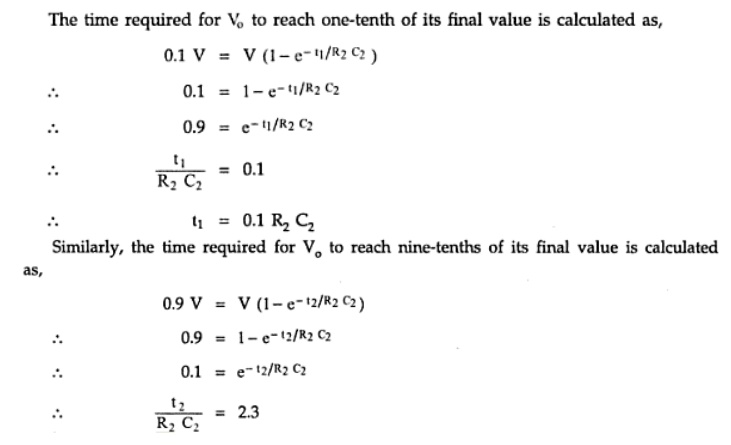Chapter: Electronic Circuits : Frequency Analysis of BJT and MOSFET Amplifiers
Rise time and its Relation to Upper Cut-off Frequency
Rise time and its Relation to
Upper Cut-off Frequency:
Upper 3 dB Frequency:

When a
step input is applied, amplifier high frequency RC network prevent the output
from responding immediately to the step input. The output voltage starts from
zero and rises towards the steady state value V, with a time constant R2C2
as shown in the above figure.
The
output voltage is given by,

The time
required for Vo to reach one-tenth of its final value is calculated
as,

The
difference between these two values is called as rise time tr of the
circuit. The rise time is given as

The Upper
3dB frequency is given as,

Upper 3dB
frequency in terms of rise time is given as,

From
above equation, it shows that upper 3dB frequency is inversely proportional to
the rise time tr.
Related Topics